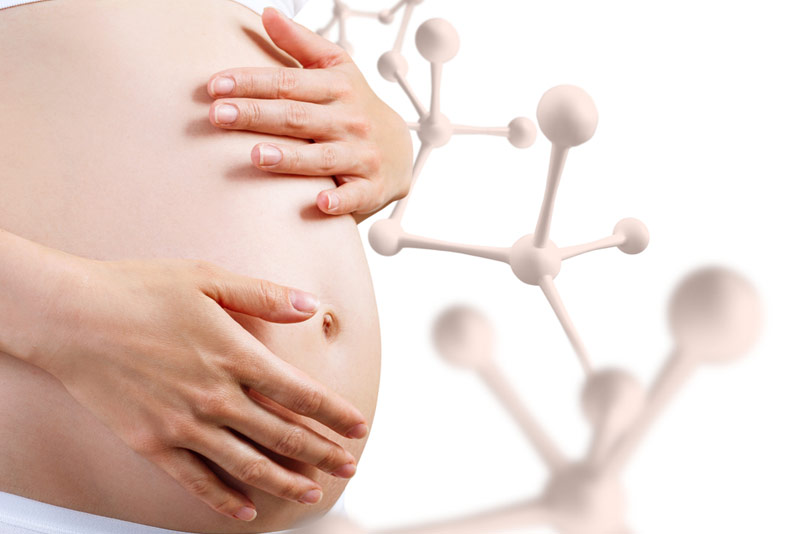What is “Cord Blood and Tissue Banking”?

The umbilical cord is the structure that carries blood rich with oxygen from the mother to the fetus along with other nutrients that essentially feed the baby during the gestational period. In the past, this structure was thrown away after delivery, viewed as merely another component of medical waste but research has found it to contain incredible healing potentials.
The blood that passes through the vessels in the umbilical cord contains cells called stem cells which have been the focus of much research throughout the past couple decades due to their expansive potential to differentiate, or turn into other cell types. Stem cells are ‘master cells’ in that they have the ability to develop into any cell type in the body differentiating into nerve cells or skin cells or almost any other cell type in the body. This is where their power lies, giving them the ability to act as a cure or treatment to “nearly 80 diseases” according to Natera, a lab/company specialized in prenatal testing, amongst other things.
In the case of cord blood banking, the stem cells are taken from blood drained from the vessels of the umbilical cord. The tissue portion of the cord can also be collected. This substance found in the tissue is known as Wharton’s jelly and can also serve therapeutic purposes. Research has found it to be especially beneficial in the treatment of wounds and injuries that are having trouble healing on their own, often called chronic wounds.
Differentiate: to change from one cell type into another, more specialized, cell type
Advantages
- A subset of stem cells called Mesenchymal Stem Cells (MSCs) are extracted from the newborn and have fewer limitations than MSC’s collected from other tissues in terms of their ability to become a wider variety of cell types.
- Neonatal sources are also able to differentiate much faster.
- Stem cells from this source are more potent than bone marrow sources of stem cells.
- Especially helpful for siblings with medical conditions that have a high possibility of being a match with their sibling doing the cord blood banking.
- You can choose to discontinue banking at any time.
Neonatal: relating to the newborn.
Disadvantages
- The amount of cells that can be extracted is limited due to the size of the structure which is the main setback, especially in adults seeking to utilize this treatment.
- Stem cells extracted from our bone marrow remains the best option, especially for adults, due to higher quantity availability.
- The samples may never be used if not found necessary.
- In some cases, typically diseases caused by gene mutations, the stem cells will also carry the mutation so they can’t be used.
What can stem cells treat?
So far, researchers have found that stem cells are effective in treating a variety of cancers, blood disorders, congenital metabolic disorders and immunodeficiency disorders. These include acute lymphocytic leukemia, neuroblastomas, Hodgkin’s disease, sickle-cell anemia, thalassemia, Gunther’s disease, Tay-Sachs disease, DiGeorge’s syndrome and Severe Combined immunodeficiency (SCID), to name a few.
Who can use the stem cells?
Depending on the nature of the illness being treated with stem cells, the cells will typically be used on the child they came from or their brothers or sisters since they will more than likely be a match. You can also choose to donate your umbilical cords’ stem cells to a public bank that will use them to treat people with a variety of debilitating diseases or conditions.
On the other hand, by choosing to bank privately, you are granted full autonomy on the use of your cells as long as you have a corresponding medical center or lab for the bank to send the sample to directly.
How are cord blood and tissue collected?
After delivery, while the cord is still clamped but no longer tying together the mother and baby, a nurse will take a sample from the umbilical cord using a needle to aspirate at least 40 milliliters of blood. The blood is sealed and packaged to be sent off to a lab or bank where it will be frozen and cryopreserved.
If at any time you decide you no longer want to bank your cord/cells, you can always cancel and your tissues will be discarded.
How many times can I do this?
You can choose to bank for one of your children or all of your children. There is no limit. Keep in mind this needs to be decided upon during the pregnancy so the proper steps can be taken during delivery to harvest the stem cells.
Contact us if you have any questions or are interested in cord blood and tissue banking!
Wharton’s Jelly: The Rich, but Enigmatic, Source of Mesenchymal Stromal Cells
